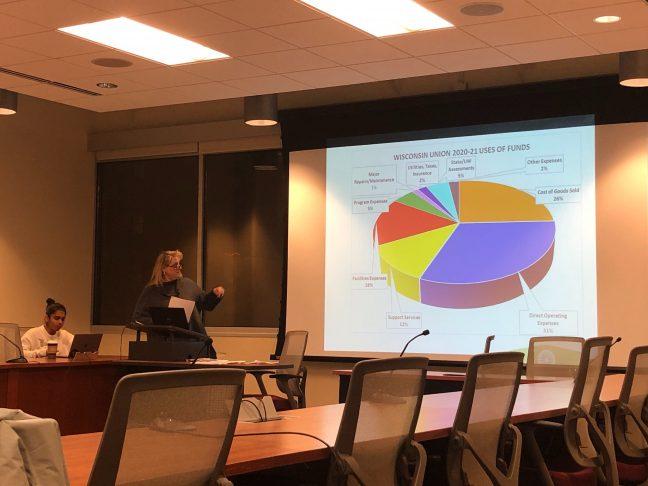The Student Services Finance Committee heard a budget proposal from the Wisconsin Union, Monday night.
President of the Wisconsin Union Tanvi Tilloo began the presentation by laying out the Union’s values and mission, which is to shape tomorrow’s leaders through the resources they offer.
These resources include dining options, student-run programming and the rooms they have available for rent, 37% of which are reserved by Registered Student Organizations, Tilloo said.
Union Assistant Director Jane Oberdorf said a year ago the Union projected their net income to be $1,887 and that now it is projected to be $1,797 by the end of the year. Oberdorf said that they did their best to project the budget accurately and that it appears they came very close.
“I don’t know how we can get it much closer in terms of where we think it’s gonna come, there’s still a few months left, it may not be exactly that, but in terms of projections right now we think we’re gonna come in on budget,” Oberdorf said.
The proposed budget accounts for a few new additions to the unions, including a wage increase for union staff.
This increase would be a $1.278 million increase in salaries, wages and fringes. This would fund a 2% salary increase effective Jan. 2021 for permanent staff, an increase from $13.27 to $13.62 for hourly wages among temporary staff, bringing them up to livable wage, increasing the starting student wage from $10 to $11 and giving a 25 cent raise to employees each semester.
These wage increases are an effort to incentivize student workers to pick up more shifts, as the Unions have struggled to employ as many students as they need, Oberdorf said.
This budget increase would result in a $2.16 increase in student segregated fees per student, but student segregated fees would only pay for what Union Director Mark Guthier calls building ready expenses.
These are what it costs to keep the Unions open as though they were just student lounges, with no dining or programming. This means the student segregated fees would only pay for the wage increases of students who do not work in dining, which is 40% of employees.
“We try not to put the costs of the programming that happens there on students, that comes through the sales of food and beverages and we don’t put the cost of actually hiring food and beverage staff on the backs of students,” Guthier said.
The Unions are also planning on increasing dining traffic in Union South and union membership as they have both declined, maintaining increased traffic at Memorial Union, opening new cafes after the successes of the Chazen and Saffron, adding a quick lunch menu to Der Rathskeller to reduce lines and adding a sustainability position after it was requested by students.


